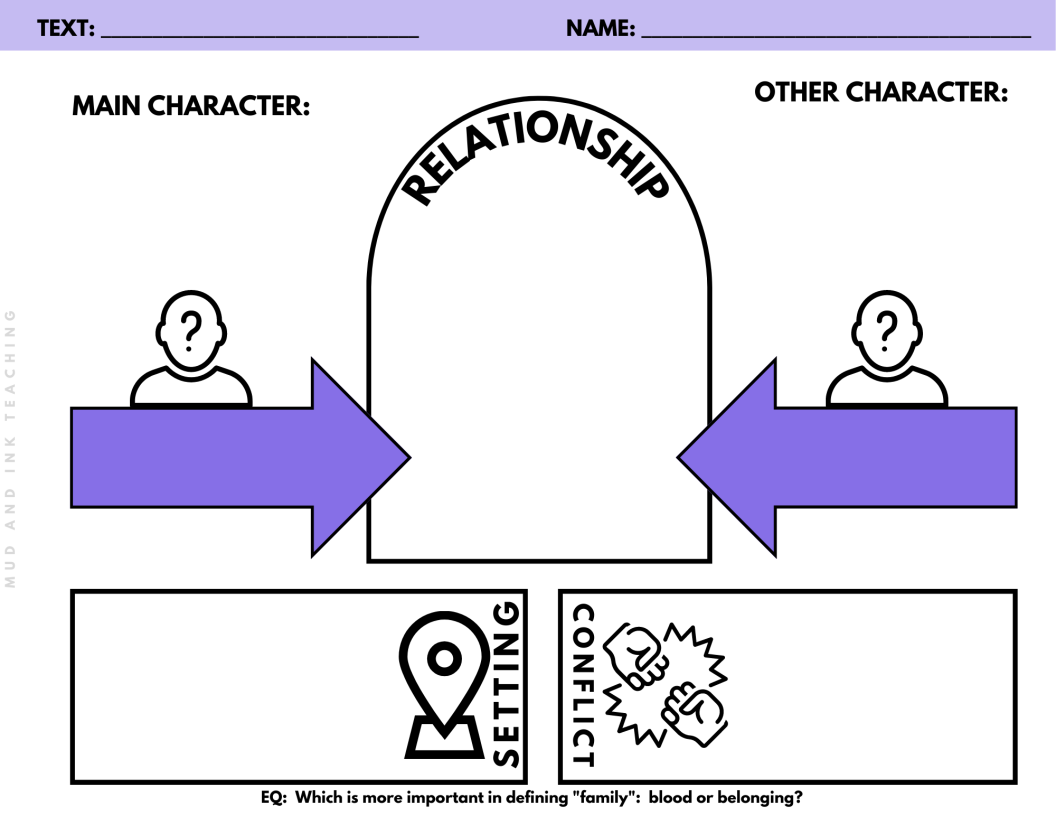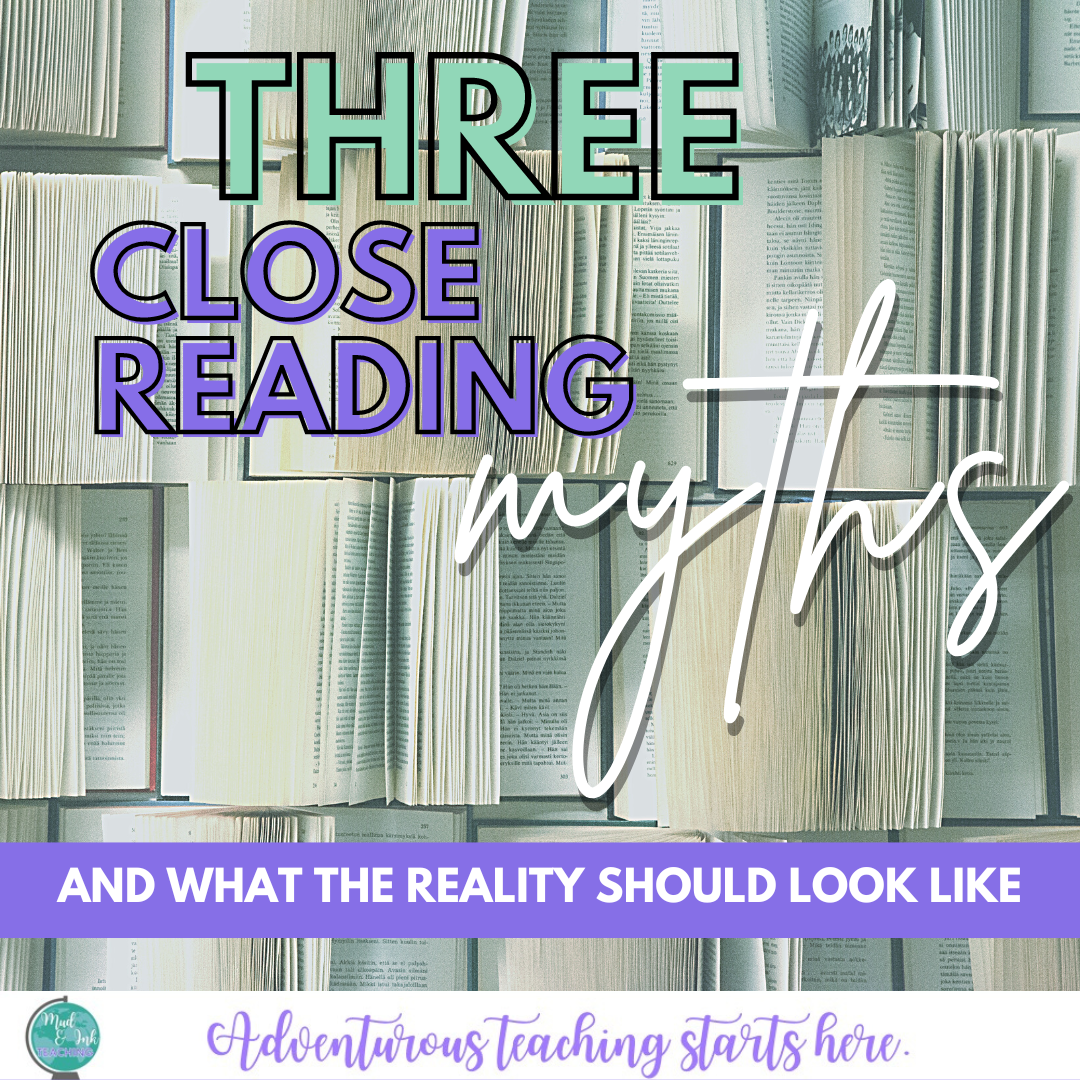
ADVENTUROUS TEACHING STARTS HERE.
Teaching Short Story Units with a Modern, Contemporary Twist in Secondary ELA
If you’ve ever found yourself searching the internet for “contemporary short stories” or “modern short stories” because you’re tired of teaching the same classic stories over and over again, I have THE HACK to change everything for you!
If you’ve ever found yourself searching the internet for “contemporary short stories” or “modern short stories” because you’re tired of teaching the same classic stories over and over again, I have THE HACK to change everything for you!
I won’t even make you wait until later to hear my little secret. I’m just gonna spill the beans :)
Stop searching for short stories and start teaching NOVEL EXCERPTS!
THE BENEFITS OF USING NOVEL EXCERPTS
Let’s get something clear from the get-go. This blog post is not advocating for exclusively teaching excerpts all year long. Some context here is very important: my suggestion is to use novel excerpts to update the outdated short stories that we find anthologized so frequently. This is a suggestion for the teacher in a short story unit rut that wants more voices, more styles of writing, and something that’s both easily accessible and FREE. Almost all of our favorite YA and adult novels have sample chapters available online, oftentimes directly from the publisher’s website.
All this is to say, we NEED full-length works in our curriculums. But that is a blog post for another day and not what you came here for. So let’s proceed.
DIVERSE VOICES
When we talk about the kinds of texts our students need, the conversation should always come back to representation. Are the life experiences, family dynamics. racial histories, gender identities, and other ways that make our students’ lives unique and important need to show up in the stories and protagonists that we include in our curriculum. Using publisher’s websites and Goodreads is a great way to research titles for the voices that you think your short story unit is missing. Once you’ve found a title, search the novel title and the word “sample” or “excerpt” in Google, and more likely than not, you’ll come up with a result!
Not all excerpts are created equal, of course, so read through what you’ve got and make a call.
Need more insight on representation and our classroom libraries? Check out this guest post from my friend John Rodney about inclusive LGBTQ+ stories and protagonists.
2. VARIED WRITING STYLES & GENRES
Here is another thing that is easier to search with novels as opposed to short stories: searching by genre! So often I see teachers lumping a bunch of stories together and naming their unit the “short story unit”. In this case, all that the stories have in common is that they’re, um, short? Not novels? So thinking through the idea of genre, not only can we find stories with general commonalities, but it sets us up nicely the opportunity to build Essential Questions.
3. FREE, HIGH-QUALITY TEXTS
I love book shopping just as much as the next English teacher, but when it comes to picking up anthologies, skimming the table of contents, and then reading each and every story, it can become a cumbersome task when rewriting a unit. Is it worth it? Absolutely — but only if you have the time and the budget. If you’re out of time and have zero budget, follow the tips above and start with your favorite novels that you think speak to each other. Start layering your excerpts underneath the umbrella of an Essential Question until you have a rich, varied, interesting, and most importantly, FREE brand new set of texts.
TWO SHORT STORY-EXCERPT UNITS TO TRY
If the above info was enough for you to take this idea and run with it, by all means, go and run! But if you’re wishing that you had a model to look at before getting started, I have two units to share with you here. I’m happy to share the gist and outline with you here, and if you’d like to purchase either, they’re only $8 each in my TpT store.
START WITH YOUR ESSENTIAL QUESTION
To me, this is the most vital part of the short story unit makeover. Units that are driven by inquiry and curiosity beyond the texts provided create a natural engagement that’s hard to achieve otherwise. So here are two EQs that I’ve used with short story units:
Which is more important in defining "family": blood or belonging?
Through which lens is it better to view others: trust or skepticism?
Each of these questions sets up an interesting task for the creator (you!). What kinds of voices can I find to shed light on this question? What are the various branches that lead back to this EQ? How can I share a variety of perspectives and experiences across time, gender, race, ethnicity, and genre? Or even — would one of these questions set me up to explore various ways of exploring one genre?
BUILD YOUR TEXT SET
So for the first question about family, I decided to treat this text set thematically: each text will offer a different perspective on the idea of what makes a family a “family”. I started with a few novels that came to mind right off the bat: Where the Crawdads Sing by Delia Owens, Far From the Tree, and . To find a few more, I went to Goodreads and searched “family”. After reading a few summaries and checking out their corresponding excerpts, I decided that Take Me With You When You Go by David Levithan and Jennifer Nevin and From Here by Luma Mufleh would be a perfect fit. This grouping offers us fiction, memoir, multiple narrator style storytelling, a novel in verse, a story about pregnancy and adoption, a refugee perspective, and so much more. No matter how different and varied these stories are, they all come back to the same thread: how do we define family?
For my other question, I had in mind a mystery and suspense genre focus even before writing the EQ, so I knew I wanted to have the texts be connected by genre. I pulled a few thrillers, a few mysteries, and was sure to include a YA crowd favorite: One of Us is Lying. My complete text set list includes excerpts from:
One of Us is Lying by Karen M. McManus
Monday’s Not Coming by Tiffany D. Jackson
The Box in the Woods by Maureen Johnson
In a Dark, Dark Wood by Ruth Ware
The goal of this particular unit is to give students the opportunity to explore the genre of mystery and thriller while trying to find out what these kinds of stories tell us about how we should approach our own view of the world.
BACKWARDS PLAN YOUR UNIT
With short stories, it’s important to backwards plan the same way we backwards plan any other unit. Here are a few questions to ask yourself as you sit down with your planner (I use Artful Agenda: a pretty, digital planner that syncs up with my Google Calendar):
What is your goal for this unit?
What should students be able to do by the end of this unit?
What assessment tool will be used to measure students at the end of the unit?
What can I use regularly during this unit to give students plenty of practice?
Which skills need direct instruction and which need review and practice?
The true danger of any unit is trying to plan starting with day one and forgetting about the end until you get there. Short stories can take a surprisingly long time to read and discuss, so by backwards planning, you can avoid being blindsided by your own story selections (I’ve been there — “The Lottery” and I have a long history of ups and downs). In my short story units, I plan backwards using templates (similary types of lessons on repeat). Every unit I teach must have:
A gateway activity (something to spark curiosity and get them excited about the EQ)
An anchor tool (a graphic organizer or handout that is used on EVERY short story to help students focus on the most important skills of the unit)
Formative assessments
Summative assessment
From that starting point, I begin to fill things in little by little keeping in mind the realistic pace that I’d like the unit to have.
MORE SHORT STORY UNIT IDEAS
My co-host of the Brave New Teaching podcast, Marie Morris, has a wonderful short story unit that’s entirely made up of folktales and fairy tales. She walks through the unit in this episode here:
Are you excited about the idea of threading together your short story unit with Essential Questions? I have an entire blog post dedicated to even more ideas for EQs and text set suggestions. Check it out here!



































